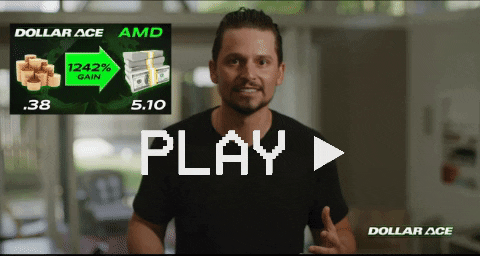It’s been a bumpy ride for the market… and there are a number of reasons as to why the market has been acting like this. However, as traders, we don’t need to hark the noise and play into other traders’ emotions, especially if you’re going to be trading options.
When the market is very volatile (having violent moves in either direction), it actually affects options prices…
… and if you don’t take into account this volatility, it could tip over your cart of cash.
You see, when uncertainty and fears rise, options actually become more expensive.
When emotions run wild, it actually drives traders and fund managers to pay up for options – increasing the demand and raising the prices of options.
If stocks start dropping… traders will look to buy puts to protect their portfolio… raising the demand for protection and making options more expensive.
On the other hand, when stocks are rebounding… traders shift to calls looking to take advantage of a move higher… making call options more expensive.
But you know what?
Before you even consider placing another options trade, you need to take into account the volatility… and I’m going to show you how this all works – putting you in a position to know exactly when to buy options… or stay on the sidelines.
This simple tool will let you know if you should be buying options… or not
I’m no mathematician, but options prices are calculated using a complex formula… and there are just a few factors that you need to understand that can affect an option’s price.
I’m going to break this down for you – with no math whatsoever – and we’re going to be solely focused on implied volatility… because there are actually options strategies out there that let you take advantage of implied volatility.
So what’s implied volatility and why is it so crucial to understanding if you’re going to be trading options?
Well, like stocks, options are based on supply and demand… the more buyers, the more expensive options get… the more sellers, the cheaper the options.
With options, the supply and demand actually affect the implied volatility (IV for short), and it’s simply the market’s expectation of how much a stock can move in a specified time frame – usually, annualized terms are used, but I will show you how to convert this into daily, monthly, weekly terms.
Think about it like this… the more buyers, the greater the implied volatility… the more sellers, the lesser the implied volatility. Just by understanding IV, you will know whether you are paying up for your options.
Moreover, when you are already in an options position, IV can actually affect your profit and loss (PnL).
Think about it, if you are long on options – you want IV to rise because that means there are traders buying those options and pushing the price higher. The opposite is true when you’re net short on options.
I know, I know… it’s a little confusing right now, and you might be scratching your head, thinking “What the heck is this guy talking about?”
Take IV into Account… or Your Portfolio Will Need an IV
Let me show you with some examples.
We’re going to be using an options calculator for now, from CBOE LiveVol.
This will actually give you an idea of how implied volatility affects an options price.
Let’s say you’re looking to buy call options with a $215 strike price when the stock is trading at $210.35 and expiring in 10 days, while implied volatility is at 20%.

Well, those calls would be worth around $1.10. If the stock has historically moved around 30% on average in any given year… then those options would be considered “cheap” and you might look to buy those calls.
But what happens if the IV is actually at 40% for those same call options?
When IV more than doubles… those options actually more than tripled!

What happens if IV gets to 100%?

Those same calls would be worth $11.89.
So if you’re looking to trade options, the simplest thing you can do is assess the overall market environment and what a stock has done historically… and compare that to the IV.
For example, when the market was all over the place like it was last week… it wasn’t the time to be an options buyer.
Why?
Well, volatility was high, as we saw a lot of back and forth action in the SPDR S&P 500 ETF (SPY).
Just take a look at this massive range SPY has been trading in between over the last 3 trading weeks.

When the market is all over the place like this… it actually makes it difficult to trade options on either side… whether you’re a buyer or seller.
You see, large Wall Street firms are getting in and out of their options positions – affecting the IV for those options…
… what if there was a way to actually take advantage of this volatility… a way for you to spy on the top options traders in the world and ethically take advantage of their moves?
Well, there is… and my former student – Kyle Dennis who turned $15K into $7M in just a few short years – developed a shockingly unique options strategy that takes advantage of what the top players are doing in the market.
The best part?
It’s simple to use, and he is willing to show you exactly how to find the best options to trade and take advantage of massive moves in stocks and IV… BEFORE they happen… potentially allowing you to DOUBLE your money week after week.
How can you get exclusive access to this proprietary strategy?
First, you must understand the ins and outs of Dollar Ace, and you can watch the replay below (keep in mind this page will be up for a limited time only).


0 Comments